Wildness rarely found among rivers
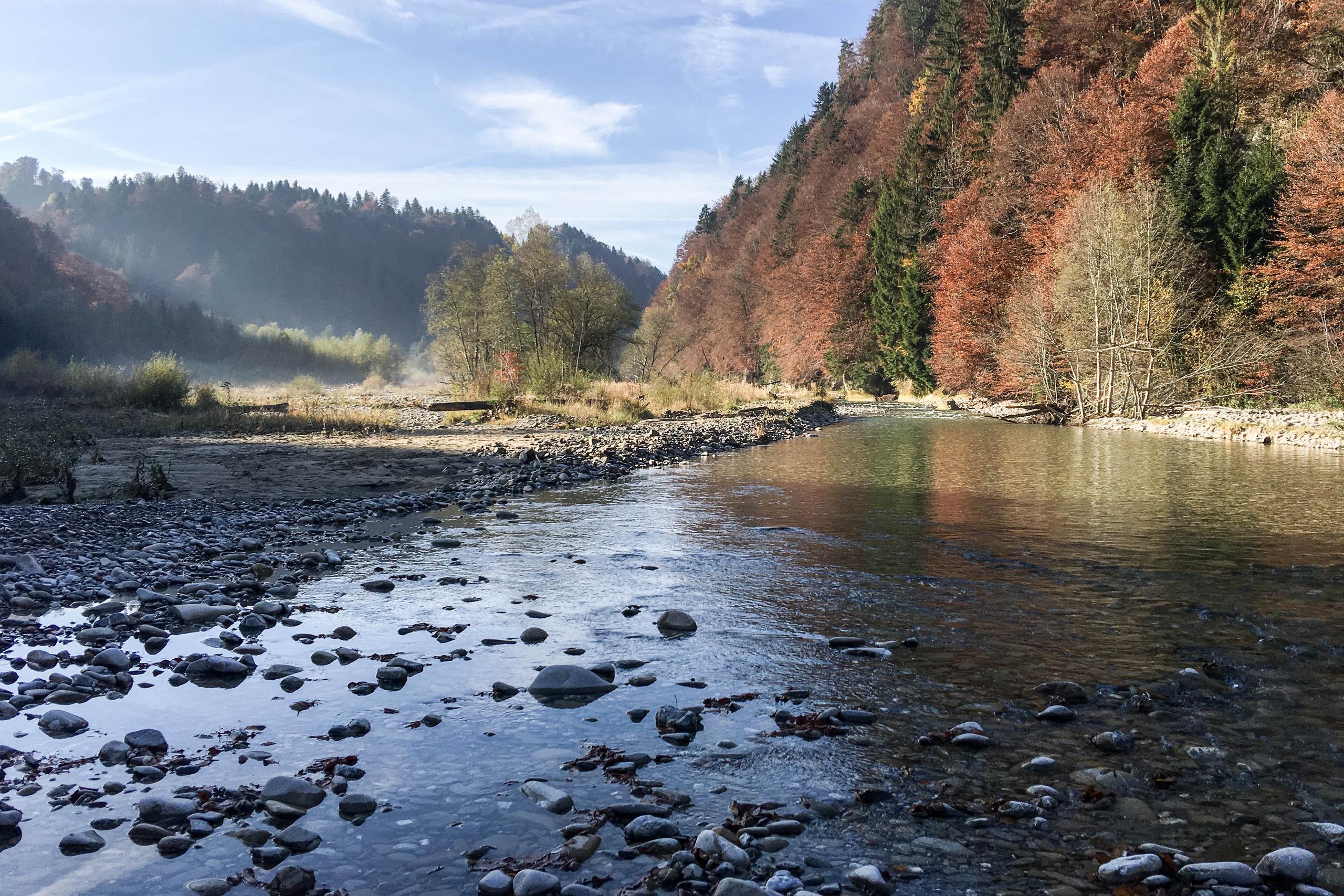
A government pledge to restore Swiss rivers makes for a tough challenge: only a few remain intact and the authorities want to increase reliance on hydropower.
Just beyond the ruined Grasburg Castle, a spectral expanse of stonewalls perched atop a jut of sandstone, the forest path leads down to an embankment of the Sense River, and a rare patch of wildness set among Switzerland’s closely managed natural landscapes.
“This is home to so many species, and so many plants, and insects, and also fish. It’s amazing, really. It’s kind of the rainforest of Switzerland,” said Julia Brändle, project leader on sustainable hydropower for environmental group WWFExternal link of Switzerland.
This untamed stretch is largely a creation of its own topography. The river section is too flat to generate hydropower, while the surrounding hillsides are too steep for grazing.
“One reason why it’s still in a natural state is because in this particular stretch, for example, the energy potential is not that high. So that for once has kept it from being used for electricity,” Brändle said during a recent hike through the area.
“And the other reason is that in this gorge, there is no use for agriculture,” she said, pointing to the steep slopes above the river’s natural flat plain. “Also, there was no need for flood protection.”
Owning up
As a nation of people that mostly worked the land, the Swiss built a network of dams and canals in the late 19th century and first half of the 20th century meant to prevent flooding and to cultivate swampy areas. Widespread gerrymandering with rivers and lakes affected nearly all of the lesser water flows.
The canalised or concrete beds quickened currents, but allowed for little seepage into the ground. That would come back to haunt the country.
The “flood of the century” in 2005 brought chaos to central Switzerland, causing seven deaths and a couple billion francs of damage. Torrential rain in 2007 left low-lying areas under water. Extreme rainfall in each of the past several years caused rivers and lakes to rise to alarming levels.
The federal government invested well more than a half-billion francs beefing up flood defences since the 2005 deluge, but some cantonal and communal projects – putting up giant flood barriers, improving weather models and “correcting” riverbeds, for example – have lagged for financial reasons and the difficulty of finding consensus among local authorities.
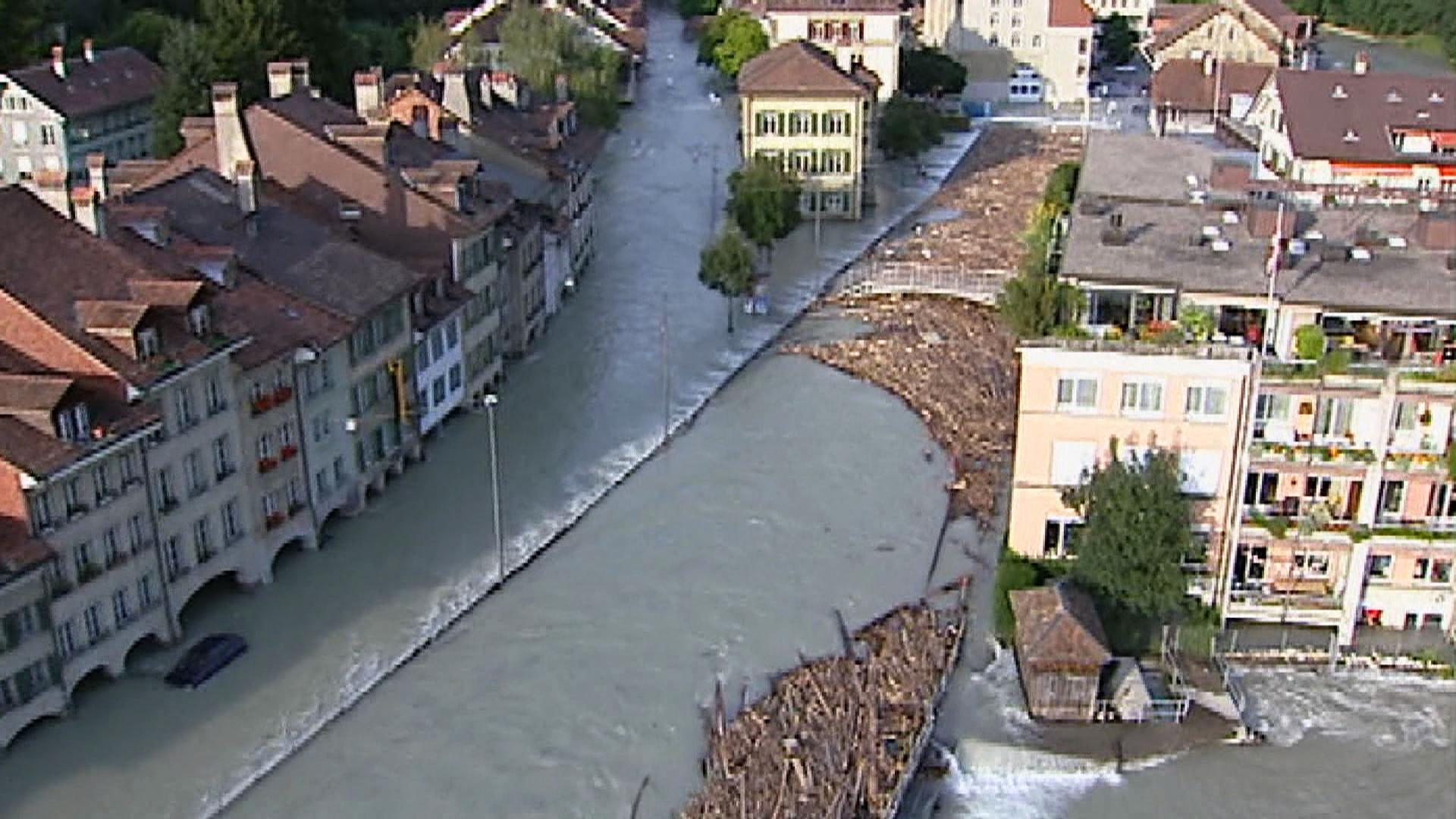
More
How Switzerland beefed up its flood defences
Natural tensions
A Swiss law that took effect in 2011 requires each of the 26 cantons to rehabilitate surface waters. The Federal Office for the Environment says many Swiss rivers will be restored to a more natural state.
On the other hand, Switzerland has what the Federal Office of Energy calls “ideal conditions” for using hydropower. The government’s 2050 Energy StrategyExternal link expressly seeks to expand use of hydropower, which would help fill the gap when five ageing nuclear power stations are eventually shut down.
Since the boom years for building new power projects, Switzerland has kept operating about 600 hydropower plants that each have a capacity of at least 300 kilowatts.
WWF says the nation’s proliferation of hydropower facilities are mainly responsible for hindering the natural flow of rivers, which provide a home for many plant and animal species. It wants Switzerland to adopt a European Union-like ban against any deterioration of valuable bodies of water.
It also argues that the government should revise the financial incentives available for new hydropower projects because they let entrepreneurs line their pockets building relatively small, marginal projects.
Limited growth
Hydropower accounted for almost 90% of domestic electricity production at the beginning of the 1970s, but that fell to 60% by 1985 after Switzerland’s nuclear power plants went online.
Much of the government’s aim for promoting hydropower has to do with upgrades and efficiency measures. A 2014 federal study concluded that hydropower expansion is not justifiable under current conditions.
Today, it provides 56% of the Swiss electricity supply, still the most important domestic source of renewable energy. However, there is only so much room for more growth nationally, says Andreas Stettler, head of hydroelectric power production for Swiss utilities firm BKW GroupExternal link, which is based in Bern and has a staff of almost 4,000.
With more efficiencies, said Stettler, hydropower production could grow to about 60% of the Swiss electricity supply but probably not much more than that because of natural and economic factors. As with a relatively small project on the Kander River in the Bernese Oberland, he said, the level of river flow and potential energy will determine whether and how to build a new plant.
“The potential for big, new projects is more or less zero in Switzerland,” Stettler said, “because all the interesting good places with good potential were built in the 1950s and the 1960s.”
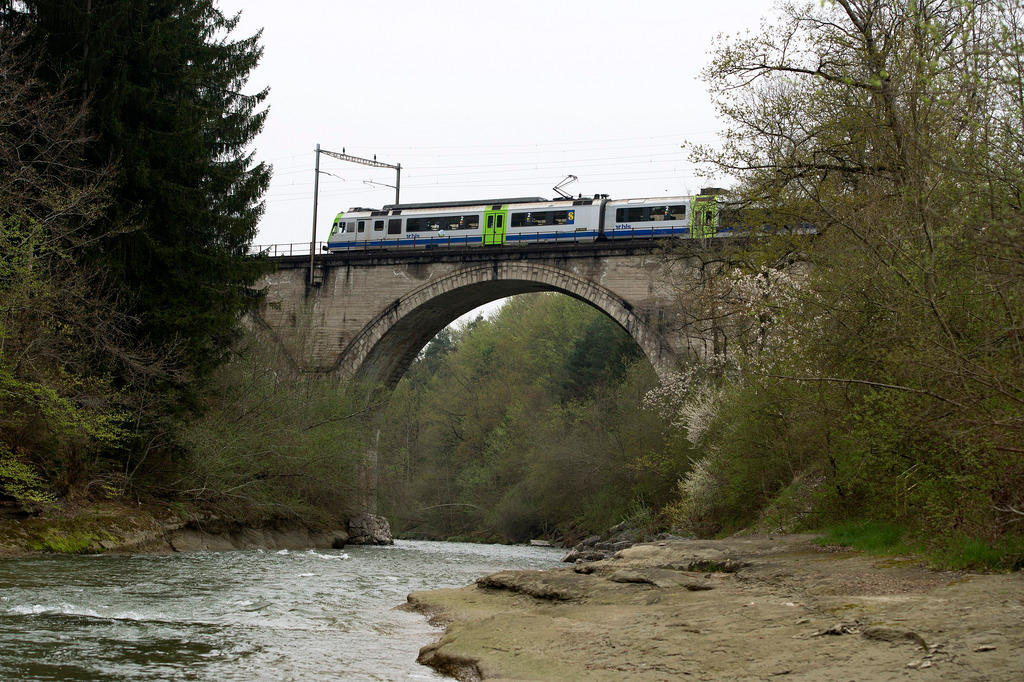
More
Swiss Waterways: Looking for wildness
The 3.6%
Restoring nature is another matter. It can take only a few years for an ecosystem to bounce back, experts say. Building new meanders, islands, sandbanks and pools can give waterways the chance to regenerate themselves. However, there is a lot of work to do.
The WWF found 80% of Swiss rivers meet just two of four basic criteria for ecological health: diversity of species, protected natural habitats, naturally flowing water, and an unaltered river structure.
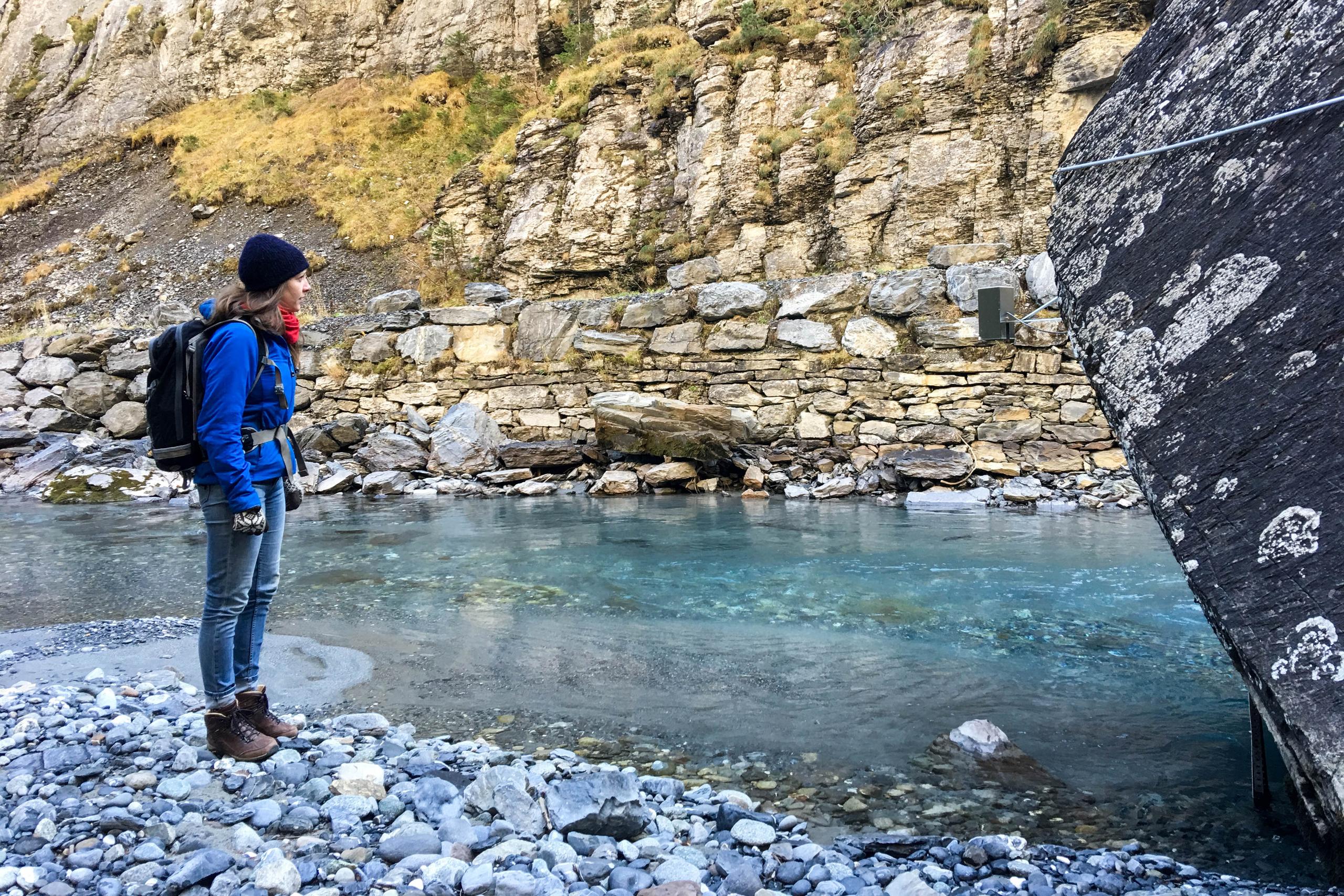
Even more alarming is the group’s findingExternal link that just 3.6% are in “highly valuable” shape, meaning they meet at least three of the criteria. Even these Swiss river “pearls” need help fending off development pressures, says Lene Petersen, the Swiss WWF’s project manager for ecological hydropower.
On a hike in the Bernese Oberland, she pointed to a relatively wild stretch of the Kander River as an example of the pressure that Swiss waterways face. There, a short, steep section of the river is being studied for its potential for hydropower. On a large boulder beside the current is a water-level gauge and solar-powered box for gathering data on the river flow.
It is an example of the many dualities of the Swiss, who tend to micro-manage their postcard-ready natural landscapes.
“I think people are environmentally conscious, they do appreciate the river, they do want a healthy environment, but then on the other hand, they also want energy, and they also want agriculture, and they also want many things,” Petersen says. As a result, she added, protection of rivers “doesn’t get enough weight compared to other interests”.

More
Snapshots of a changing alpine climate
Abundance of water
Known as the “water tower” of Europe, Switzerland has 6% of the continent’s freshwater resources despite taking up just 0.4% of its land mass.
The country has about 1,500 lakes, most of them former glaciers. Lake Neuchâtel is the largest entirely on Swiss territory; Lake Geneva is the largest freshwater lake in central Europe. Among major rivers, the Rhone, Rhine and Inn all have their source in Switzerland.
Much of Switzerland’s precipitation falls as snow in the Alps. Its storage in snow and glaciers is important in the seasonal distribution of runoff, especially in high-altitude catchments. Alpine rivers have their peak runoff during spring and summer, as snow and then glaciers start to melt.
No other alpine country uses its rivers as intensively as Switzerland, which has about 1,500 power plants and 150,000 artificial weirs.

In compliance with the JTI standards
More: SWI swissinfo.ch certified by the Journalism Trust Initiative









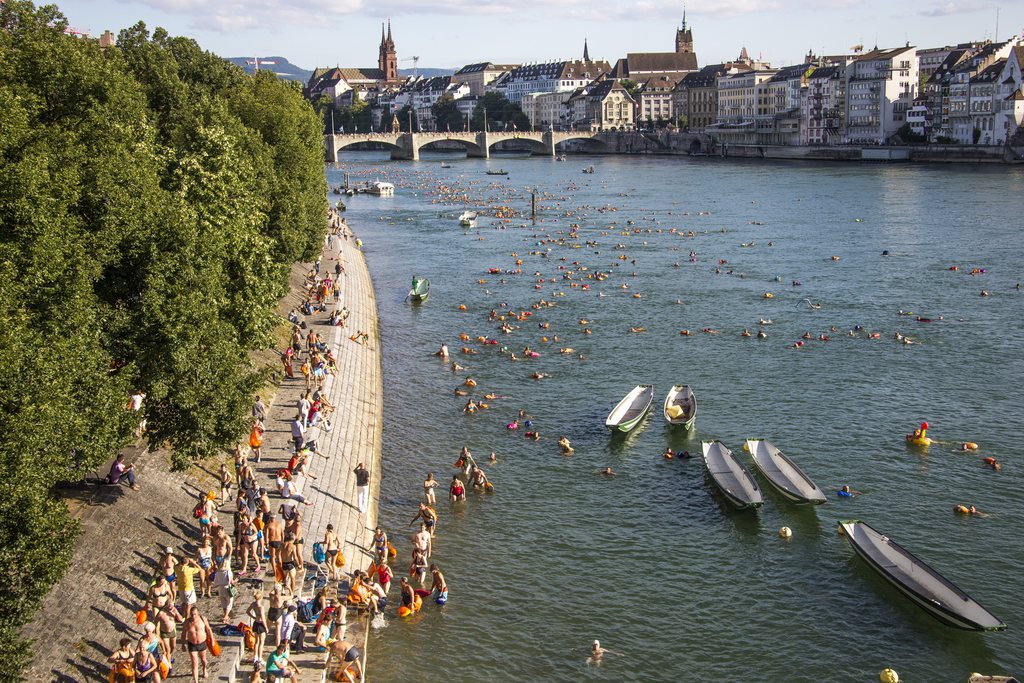



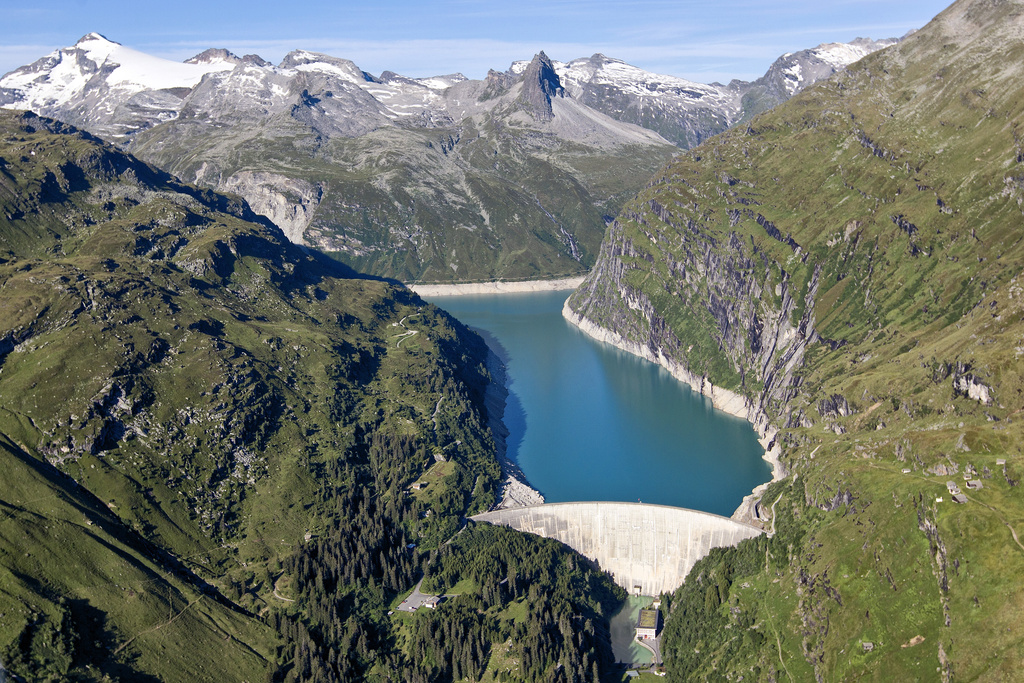



You can find an overview of ongoing debates with our journalists here . Please join us!
If you want to start a conversation about a topic raised in this article or want to report factual errors, email us at english@swissinfo.ch.